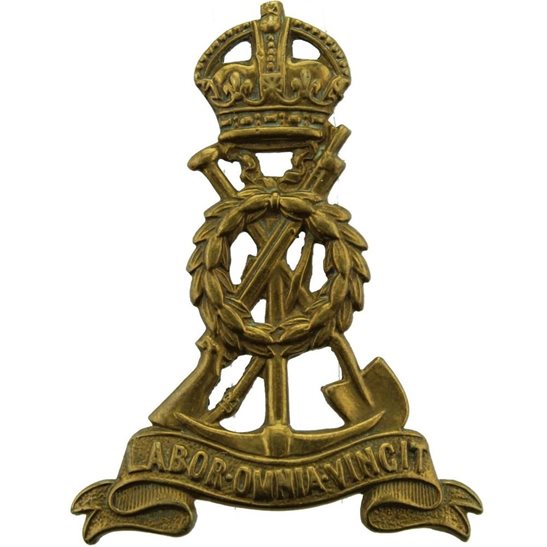Personal Details
Born: 17 May 1887 and baptised 10 July the same year at Whitchurch Wesleyan Methodist Chapel. The 1939 Register lists his date of birth as 17th May 1886, as does his death record but this does not tally with census records.
Family: Richard was the seventh of eight children born to Joseph & Ellen Eccleston. He married Jessie Eliza Eccleston in Surrey during the third quarter of 1940; there were no children for the marriage.
Residence: In 1891 the family were living at 8 Egerton Road, Whitchurch. Ten years later they had moved to Belton Road. By 1911 Richard had left the family home and was boarding at 9 Church Road in Nantwich. Information on his medal roll card dated 1922-3 gives his contact details as a flat at 123 Gloucester Road, London SW7. The 1939 Register records both he and Jessie living in Ranelagh Avenue, Barnes, Surrey. In 1954 at the time of Jessie’s death they were living in The Crescent, Barnes.
Employment: According to the 1911 census Richard was working as a journalist. His occupation in 1939 was that of journalist working for the Press Association. By 1954 he was described as a retired journalist.
Died: During the first three months of 1970 in Richmond Upon Thames, Surrey.
Military Details
Regiment: Labour Corps (previously Royal Welsh Fusiliers)
Rank: 2nd Lieutenant (previously Private in both Labour Corps and Royal Welsh Fusiliers)
Service Number: Commissioned 15 April 1918 (previously 399315 and 16080)
Date of Enlistment: Prior to December 1915
Date of Discharge: Not known
Reason for Discharge: Not known
Other Information: Brother of Rupert James Eccleston who served in the Royal Army Ordnance Corps as a corporal.
Richard was awarded the Campaign Medals (1915 Star, British War Medal and Victory Medal)

The 1914 Star (also known as 'Pip') was authorised under Special Army Order no. 350 in November 1917 and by an Admiralty Fleet Order in 1918, for award to officers and men of the British and Indian Expeditionary Forces who served in France or Belgium between 5 August and midnight of 22–23 November 1914. The former date is the day after Britain's declaration of war against the Central Powers, and the closing date marks the end of the First Battle of Ypres.
The 1914–15 Star (also known as 'Pip') was instituted in December 1918 and was awarded to officers and men of British and Imperial forces who served against the Central European Powers in any theatre of the Great War between 5 August 1914 and 31 December 1915. The period of eligibility was prior to the introduction of the Military Service Act 1916, which instituted conscription in Britain.
The British War Medal (also known as 'Squeak') was a silver or bronze medal awarded to officers and men of the British and Imperial Forces who either entered a theatre of war or entered service overseas between 5th August 1914 and 11th November 1918 inclusive. This was later extended to services in Russia, Siberia and some other areas in 1919 and 1920. Approximately 6.5 million British War Medals were issued. Approximately 6.4 million of these were the silver versions of this medal. Around 110,000 of a bronze version were issued mainly to Chinese, Maltese and Indian Labour Corps. The front (obv or obverse) of the medal depicts the head of George V. The recipient's service number, rank, name and unit was impressed on the rim.
The Allied Victory Medal (also known as 'Wilfred') was issued by each of the allies. It was decided that each of the allies should each issue their own bronze victory medal with a similar design, similar equivalent wording and identical ribbon. The British medal was designed by W. McMillan. The front depicts a winged classical figure representing victory. Approximately 5.7 million victory medals were issued. Interestingly, eligibility for this medal was more restrictive and not everyone who received the British War Medal ('Squeak') also received the Victory Medal ('Wilfred'). However, in general, all recipients of 'Wilfred' also received 'Squeak' and all recipients of The 1914 Star or The 1914/1915 Star (also known as 'Pip') also received both 'Squeak' and 'Wilfred'. The recipient's service number, rank, name and unit was impressed on the rim.

